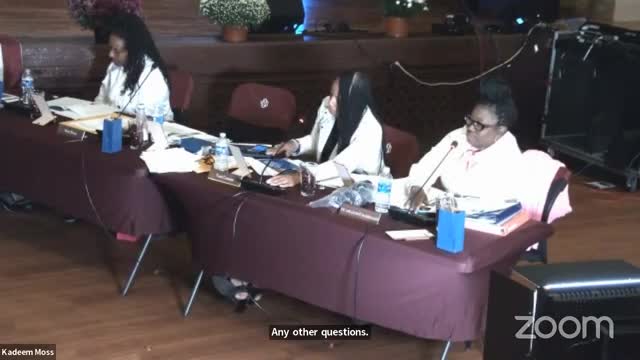District launches aggressive initiative to ensure safe air and water
October 09, 2024 | St. Louis City, School Districts, Missouri
This article was created by AI summarizing key points discussed. AI makes mistakes, so for full details and context, please refer to the video of the full meeting. Please report any errors so we can fix them. Report an error »

In a recent government meeting, officials provided an update on significant improvements in air quality and water testing within the district, emphasizing the commitment to maintaining a safe environment for students and staff. The presentation highlighted the district's proactive measures in response to environmental concerns, particularly regarding air quality in older school buildings and lead contamination in drinking water.
The district has received a new water testing grant, which is part of an ongoing effort to ensure safe drinking water across its facilities. Since initiating water sampling in 2016, the district has seen a notable decrease in non-compliant water sources, dropping from approximately 9% to 3.5%. Out of over 2,000 samples collected, only 85 did not meet state requirements. For those that failed testing, immediate actions are taken to repair or replace the affected sources.
In addition to water safety, the district is addressing indoor air quality by cleaning ductwork and upgrading HVAC systems in older buildings. Many of these systems are over a century old and have not been adequately maintained. The district has utilized ESSER funds and bond issues to prioritize duct cleaning, particularly in schools with younger students. Annual filter replacements and the installation of new chillers and boilers are also part of the ongoing improvements.
The meeting also touched on the district's lead mitigation strategies, which include regular inspections of painted surfaces in child-occupied areas and the replacement of lead-contaminated fixtures. The district has implemented water bottle filling stations in every school to promote access to safe drinking water.
Looking ahead, the district has secured a Renew America grant aimed at further enhancing air quality and reducing greenhouse gas emissions, alongside a separate grant for lead remediation efforts. Officials expressed their commitment to ensuring that all facilities are safe and conducive to learning, while also acknowledging the broader implications of lead contamination in the community.
The discussions underscored the importance of collaboration with city officials and the pursuit of additional grant opportunities to address lead issues comprehensively, recognizing that the challenges extend beyond school grounds into the surrounding neighborhoods.
The district has received a new water testing grant, which is part of an ongoing effort to ensure safe drinking water across its facilities. Since initiating water sampling in 2016, the district has seen a notable decrease in non-compliant water sources, dropping from approximately 9% to 3.5%. Out of over 2,000 samples collected, only 85 did not meet state requirements. For those that failed testing, immediate actions are taken to repair or replace the affected sources.
In addition to water safety, the district is addressing indoor air quality by cleaning ductwork and upgrading HVAC systems in older buildings. Many of these systems are over a century old and have not been adequately maintained. The district has utilized ESSER funds and bond issues to prioritize duct cleaning, particularly in schools with younger students. Annual filter replacements and the installation of new chillers and boilers are also part of the ongoing improvements.
The meeting also touched on the district's lead mitigation strategies, which include regular inspections of painted surfaces in child-occupied areas and the replacement of lead-contaminated fixtures. The district has implemented water bottle filling stations in every school to promote access to safe drinking water.
Looking ahead, the district has secured a Renew America grant aimed at further enhancing air quality and reducing greenhouse gas emissions, alongside a separate grant for lead remediation efforts. Officials expressed their commitment to ensuring that all facilities are safe and conducive to learning, while also acknowledging the broader implications of lead contamination in the community.
The discussions underscored the importance of collaboration with city officials and the pursuit of additional grant opportunities to address lead issues comprehensively, recognizing that the challenges extend beyond school grounds into the surrounding neighborhoods.
View full meeting
This article is based on a recent meeting—watch the full video and explore the complete transcript for deeper insights into the discussion.
View full meeting
